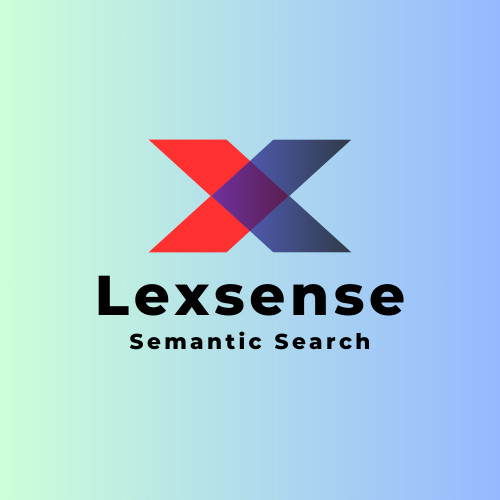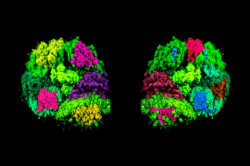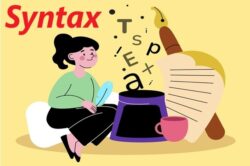Abstract
Glossary standardization is crucial for ensuring clarity, consistency, and interoperability across various domains. A well-structured glossary provides a common vocabulary, facilitating effective communication, data exchange, and knowledge sharing. While defining terms is fundamental, the organization and classification of these terms are equally important for maximizing a glossary’s usability and impact. This paper explores the significant role of taxonomy in glossary standardization, highlighting its importance in establishing hierarchical relationships, managing ambiguity, and supporting effective information retrieval. We argue that leveraging taxonomic principles during glossary development leads to more robust, maintainable, and user-friendly resources.
Introduction
In glossary standardization, taxonomy provides a structured framework for organizing and categorizing terms, ensuring that definitions are consistent, easily navigable, and universally understood. Taxonomy serves as a backbone to make glossaries more coherent and usable, especially when dealing with complex domains like technical fields, law, medicine, or industry-specific terminology. By organizing terms in a hierarchical or categorical structure, taxonomy helps ensure that terms in a glossary are systematically classified, reducing confusion and enhancing clarity.
Role of Taxonomy in Glossary Standardization
Taxonomy provides the framework for structuring and organizing the components of a glossary, allowing users to navigate and understand the concepts more efficiently. It helps resolve ambiguity by contextualizing terms within a broader framework and facilitates information retrieval by enabling users to search for terms based on their relationships to other concepts. Without a strong taxonomic foundation, glossaries risk becoming unwieldy, inconsistent, and ultimately, less effective. This is crucial for effective communication and data exchange. It provides a common vocabulary that enhances understanding across different domains (Prosdocimi et al., 2009). Taxonomy allows for the creation of hierarchical relationships between terms, such as “broader than,” “narrower than,” and “part of.” For example, For example: In a glossary for software development, terms can be categorized under broader categories like “Programming Languages,” “Frameworks,” and “Development Tools.” Each of these categories can have subcategories, such as “Python” and “Java” under “Programming Languages.” This hierarchical structure provides context and helps users understand the relationships between different concepts. This also facilitates navigation and browsing within the glossary. In cases where no glossary exists (e.g. for terminology of a particular branch), results of terminographic analysis help establish the type and structure of the terminographic work that needs to be compiled for a particular user group.
Managing Ambiguity and Polysemy
Many terms can have multiple meanings depending on the context. Taxonomy helps resolve ambiguity by explicitly defining the relationship of a term to its different senses. Synonyms and near-synonyms can also be linked, providing users with alternative ways to express the same concept and ensuring they are directed to the correct definition. For example, the term “bank” can have different meanings in finance and environmental science. Taxonomy can distinguish these senses and link them to their respective definitions. By defining terms and their relationships in a clear, standardized way, taxonomy ensures that terms are used consistently across different documents, departments, or organizations. This reduces the risk of ambiguity or misunderstanding. For example: A company’s internal glossary might categorize “Sales” terms separately from “Marketing” terms, ensuring that terms like “Lead” or “Conversion” have distinct, consistent meanings depending on their context.
Additionally, a taxonomy can help to identify and manage polysemy in language. By identifying the different meanings of a word and categorizing them, a taxonomy can help to ensure that all parties are aware of the potential for multiple interpretations and can take steps to clarify their meanings as needed. By defining concepts, establishing relationships between them (e.g., is-a, part-of), and assigning consistent terminology, taxonomy enables users to differentiate between distinct meanings and understand the nuances within related concepts.
Supporting Terminology Evolution:
The relentless pace of scientific discovery, technological innovation, and evolving social understanding The rapid advancement in scientific and technological fields creates a constant need for new terminology to accurately describe emerging concepts and innovations [(Baker et al., 2020)]necessitates a dynamic and adaptable terminology. New concepts emerge, existing concepts are refined, and previously distinct fields converge, leading to a constant need for new terms and modifications to existing ones. Simply creating new terms in isolation is insufficient; a robust framework is required to ensure that these terms are accurately defined, consistently applied, and integrated cohesively within the broader knowledge landscape. Taxonomy, the discipline of classifying and organizing information, offers this crucial support.
Taxonomy provides a critical support structure for terminology evolution by offering frameworks for understanding relationships between concepts, facilitating the identification of gaps and inconsistencies in existing terminology, and enabling the systematic integration of new terms into established knowledge domains. Taxonomy provides a flexible structure that can accommodate new terms or evolving concepts over time. As fields evolve, glossaries can be updated to include new categories or subcategories without disrupting the overall structure.
Cross-Referencing Terms:
Taxonomies allow for the creation of relationships between terms through cross-references. Terms with similar or related meanings can be linked together, helping users understand how concepts are connected within the glossary.
Example: In a medical glossary, terms like “Hypertension” and “High Blood Pressure” might be cross-referenced, indicating that they refer to the same concept. These cross-references could be facilitated by a taxonomy that links synonymous or related terms.
Facilitating Multilingual Glossaries:
A taxonomy-based structure in glossary standardization can help ensure that terms are consistently categorized and defined across multiple languages, supporting cross-language consistency.
Example: In international business, a multilingual glossary might standardize terms like “Contract,” “Agreement,” and “Clause” across English, French, and Spanish, ensuring consistent usage through a taxonomy of legal terms.
Steps to Implement Taxonomy in Glossary Standardization
Identify the Scope and Domain:
Define the scope of the glossary. This involves identifying the domain or field the glossary will cover, such as finance, healthcare, or software development. This initial step sets the foundation for creating a taxonomy that reflects the specific terminology of that field.
Example: In a financial glossary, categories might include “Banking,” “Investments,” “Taxation,” and “Accounting.”
Define Hierarchical Relationships:
Once the terms are identified, the next step is to define the hierarchical relationships between terms. These relationships might involve broad categories and their specific subcategories, or parent-child relationships.
Example: In a marketing glossary, a broad category like “Digital Marketing” might include subcategories like “SEO,” “Content Marketing,” and “Social Media Marketing.”
Categorize and Classify Terms:
Each term should be placed into its appropriate category based on its relationship to other terms. This ensures that the glossary reflects a logical structure where similar terms are grouped together.
Example: In a medical glossary, terms like “Viral Infections” and “Bacterial Infections” would be categorized under a broader “Infectious Diseases” category.
Cross-Reference and Link Terms:
Taxonomy enables the linking of related terms, creating a web of cross-references that improves the glossary’s usability. Synonyms, related concepts, or alternative terms can be linked together.
Example: In an IT glossary, terms like “Cloud Computing” and “Virtualization” might be cross-referenced, as they are closely related but distinct concepts.
Involve Domain Experts:
Collaboration with experts in the field ensures that the taxonomy accurately reflects the relationships between terms and includes the most relevant and up-to-date terminology.
Example: In a legal glossary, working with lawyers and legal experts ensures that legal terms are accurately categorized and defined.
Test and Iterate:
After the initial taxonomy is created, it should be tested with actual users to ensure it is functional and meets their needs. The taxonomy might need to be adjusted based on feedback or as new terms emerge.
Example: A glossary for cybersecurity might need regular updates as new threats or technologies arise, necessitating the addition of terms like “Ransomware” or “Zero-Day Exploits.”
Benefits of Taxonomy in Glossary Standardization
Enhanced Usability:
A taxonomy-based glossary provides a clear, organized structure that makes it easier for users to find terms and understand their relationships. This enhances the overall usability and efficiency of the glossary.
Consistency and Clarity:
Taxonomy ensures that terms are defined and used consistently across different documents, teams, or systems, reducing ambiguity and improving communication.
Scalability:
Taxonomies allow glossaries to scale easily by accommodating new terms and concepts as they emerge, without disrupting the existing structure.
Cross-Domain and Cross-Language Compatibility:
By categorizing terms based on universal principles, taxonomy supports the creation of glossaries that are compatible across different domains and languages.
Facilitates Knowledge Sharing:
A well-structured glossary helps teams and organizations share knowledge more effectively, ensuring that everyone is using the same terms with the same meanings.
Challenges in Using Taxonomy for Glossary Standardization
Complexity in Defining Relationships:
In some fields, the relationships between terms might be complex or not easily defined, making it difficult to create a simple taxonomy.
Domain-Specific Variations:
Different industries or even departments within the same organization might use the same term differently, complicating the creation of a standardized taxonomy.
Maintenance and Updating:
As fields evolve and new terms emerge, maintaining a current and relevant taxonomy can be time-consuming and requires continuous monitoring.
Cross-Disciplinary Conflicts:
Glossaries that span multiple fields or disciplines may encounter conflicts in terminology usage, where the same term may have different meanings across domains.
Example: Taxonomy in a Scientific Glossary
In a scientific glossary, taxonomy plays a crucial role in organizing terms related to different scientific disciplines. A taxonomy for such a glossary might categorize terms into high-level categories like “Physics,” “Biology,” and “Chemistry.” Each of these categories would then have subcategories:
Physics: Subcategories might include “Classical Mechanics,” “Quantum Mechanics,” and “Thermodynamics.”
Biology: Subcategories might include “Genetics,” “Microbiology,” and “Ecology.”
Chemistry: Subcategories might include “Organic Chemistry,” “Inorganic Chemistry,” and “Physical Chemistry.”
Each of these subcategories would contain specific terms, making it easier for users to navigate the glossary and understand the relationships between different scientific concepts.
Relationship to Ontologies and Knowledge Graphs
The principles of taxonomy used in glossary standardization are closely related to the development of ontologies and knowledge graphs. While a glossary primarily focuses on definitions and relationships between terms, an ontology goes further by defining concepts and their properties, axioms, and constraints. A knowledge graph, in turn, represents a network of entities (concepts and instances) and their relationships.
Therefore, a well-structured glossary can serve as a foundational layer for building more sophisticated ontologies and knowledge graphs. The taxonomic relationships defined in the glossary provide a solid starting point for defining the semantic relationships within the ontology or knowledge graph.
Conclusion
Taxonomy plays a vital role in glossary standardization, providing a framework for organizing and structuring terms, managing ambiguity, and supporting effective information retrieval. By applying taxonomic principles to glossary development, organizations can create more robust, maintainable, and user-friendly resources that facilitate communication, data interoperability, and knowledge sharing. While challenges exist, the benefits of incorporating taxonomy into glossary standardization far outweigh the costs. As the need for standardized vocabularies continues to grow, the importance of taxonomy in glossary development will only increase. Future research should focus on developing more sophisticated tools and methodologies for managing and maintaining taxonomies, as well as exploring the integration of glossaries with ontologies and knowledge graphs to unlock even greater potential for semantic interoperability.
Taxonomy in glossary standardization is essential for organizing, categorizing, and linking terms in a way that ensures consistency, clarity, and usability. It enables the creation of well-structured glossaries that are easy to navigate, scalable, and flexible enough to adapt to changing terminology. By defining hierarchical relationships between terms and allowing for cross-referencing, taxonomy helps glossaries serve as reliable, user-friendly tools for communication and knowledge management across industries, domains, and languages.



















+ There are no comments
Add yours